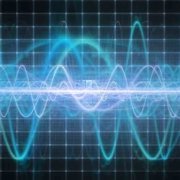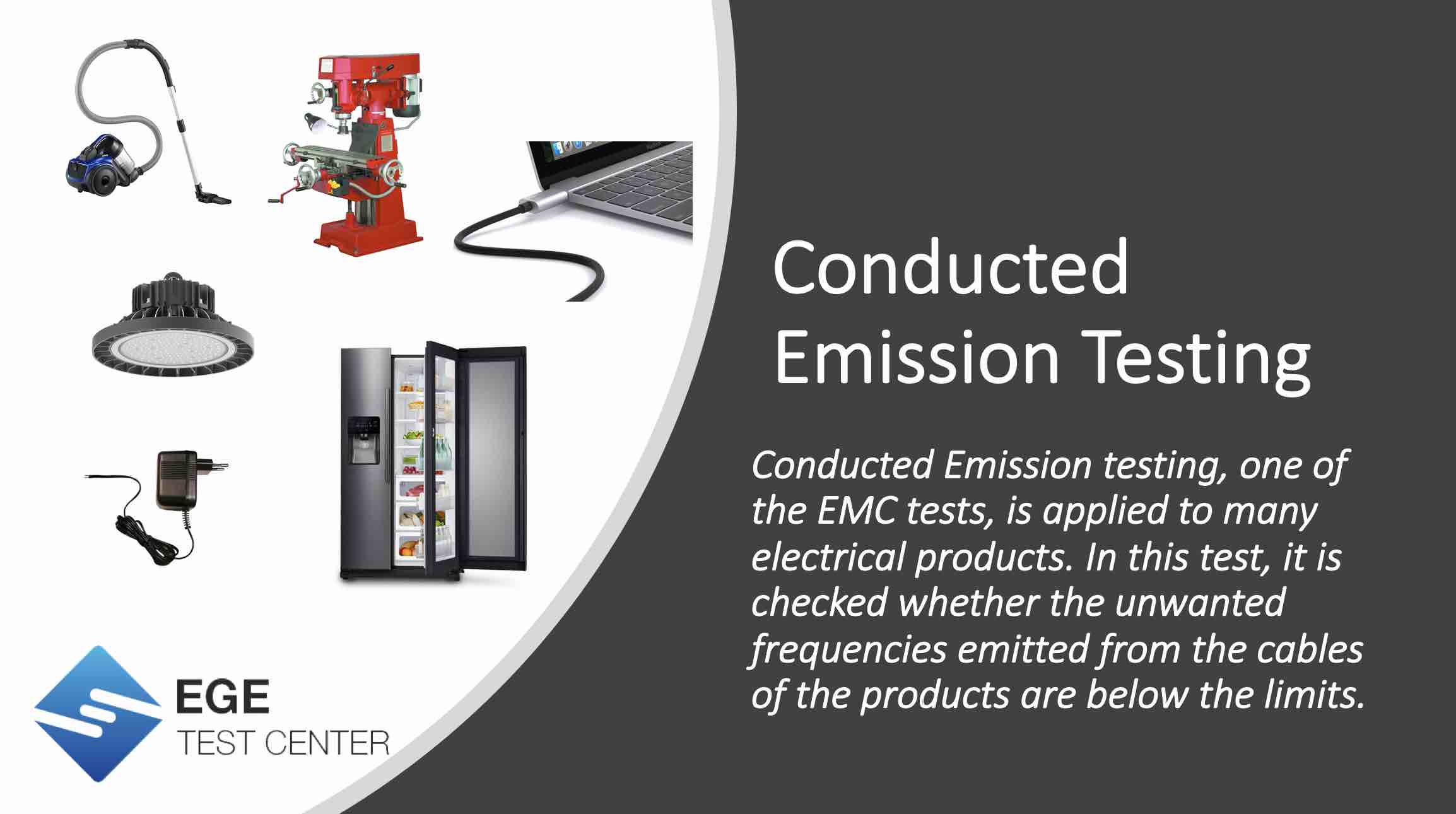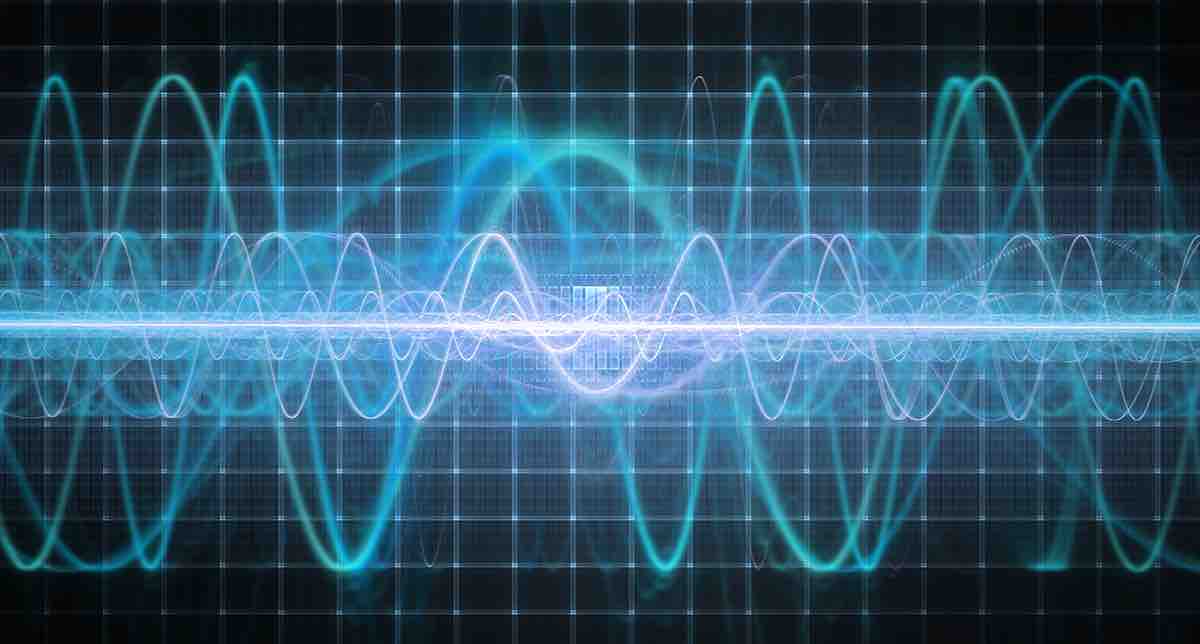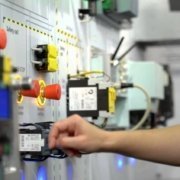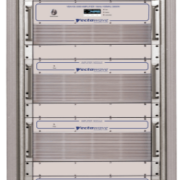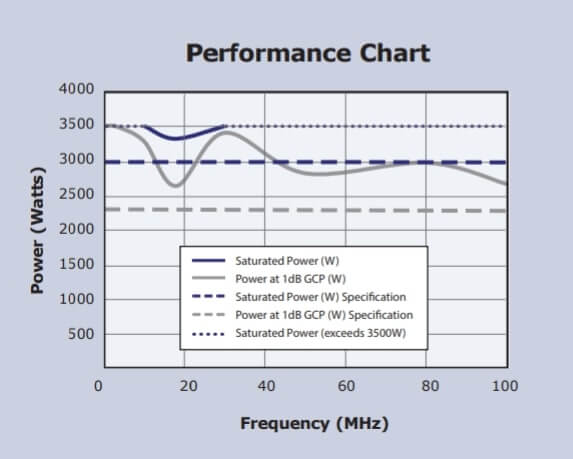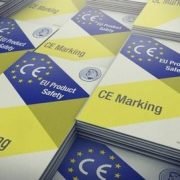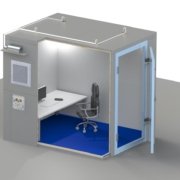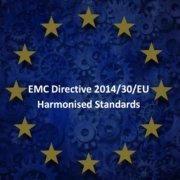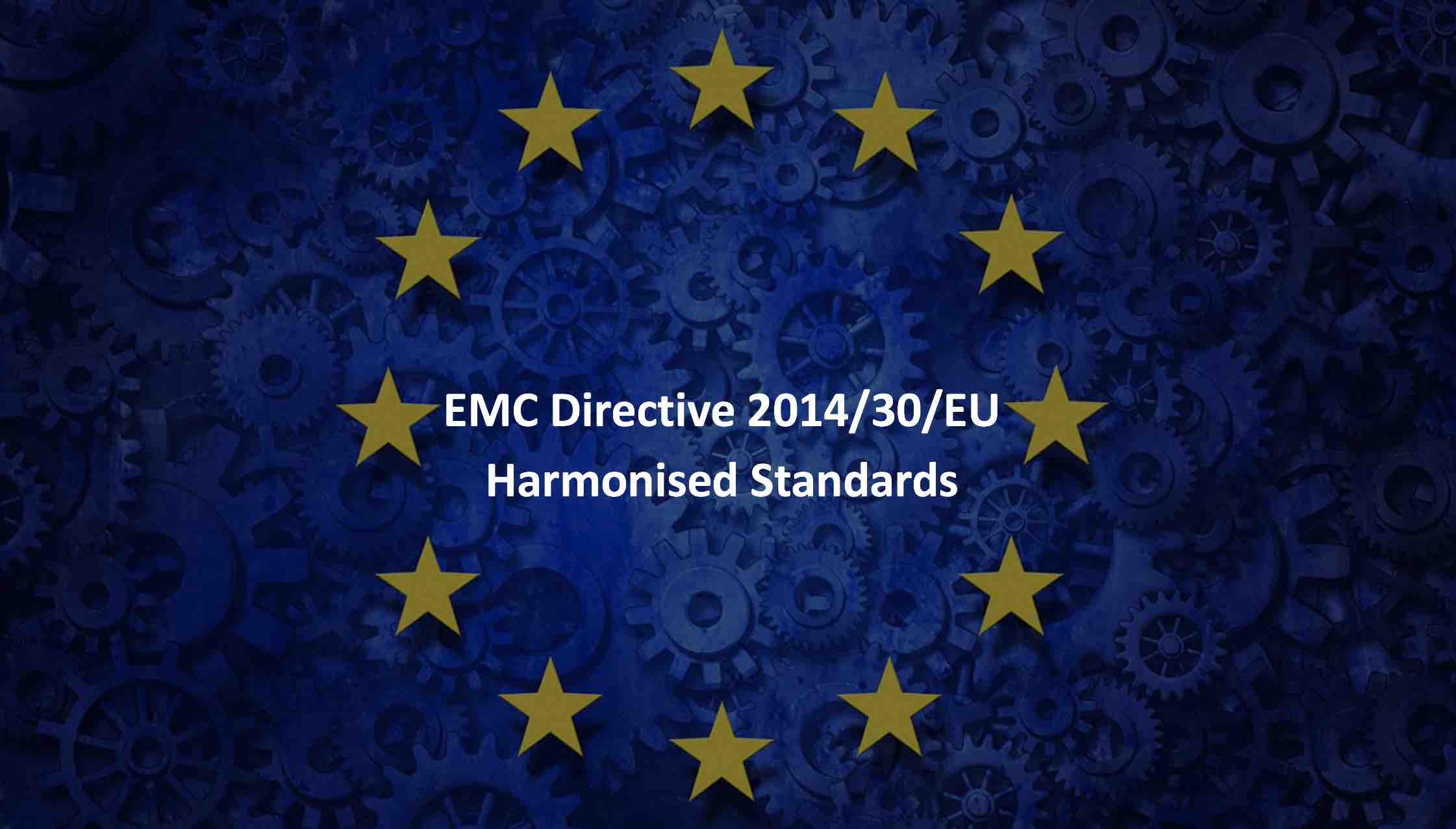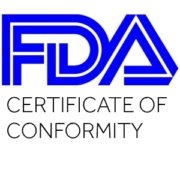|
ESO (1)
|
Reference and title of the standard
(and reference document)
|
First publication OJ
|
Reference of superseded standard
|
Date of cessation of presumption of conformity of superseded standard
Note 1
|
| CEN |
EN 617:2001+A1:2010
Continuous handling equipment and systems – Safety and EMC requirements for the equipment for the storage of bulk materials in silos, bunkers, bins and hoppers |
13/05/2016
|
|
|
| CEN |
EN 618:2002+A1:2010
Continuous handling equipment and systems – Safety and EMC requirements for equipment for mechanical handling of bulk materials except fixed belt conveyors |
13/05/2016
|
|
|
| CEN |
EN 619:2002+A1:2010
Continuous handling equipment and systems – Safety and EMC requirements for equipment for mechanical handling of unit loads |
13/05/2016
|
|
|
| CEN |
EN 620:2002+A1:2010
Continuous handling equipment and systems – Safety and EMC requirements for fixed belt conveyors for bulk materials |
13/05/2016
|
|
|
| CEN |
EN 1155:1997
Building hardware – Electrically powered hold-open devices for swing doors – Requirements and test methods |
13/05/2016
|
|
|
| EN 1155:1997/A1:2002 |
13/05/2016
|
Note 3
|
|
| CEN |
EN 12015:2014
Electromagnetic compatibility – Product family standard for lifts, escalators and moving walks – Emission |
13/05/2016
|
|
|
| CEN |
EN 12016:2013
Electromagnetic compatibility – Product family standard for lifts, escalators and moving walks – Immunity |
13/05/2016
|
|
|
| CEN |
EN 12895:2015 (new)
Industrial trucks – Electromagnetic compatibility |
This is the first publication
|
|
|
| CEN |
EN 13241-1:2003+A1:2011
Industrial, commercial and garage doors and gates – Product standard – Part 1: Products without fire resistance or smoke control characteristics |
13/05/2016
|
|
|
| CEN |
EN 13309:2010
Construction machinery – Electromagnetic compatibility of machines with internal power supply |
13/05/2016
|
|
|
| CEN |
EN 14010:2003+A1:2009
Safety of machinery – Equipment for power driven parking of motor vehicles – Safety and EMC requirements for design, manufacturing, erection and commissioning stages |
13/05/2016
|
|
|
| CEN |
EN ISO 14982:2009
Agricultural and forestry machinery – Electromagnetic compatibility – Test methods and acceptance criteria (ISO 14982:1998) |
13/05/2016
|
|
|
| CEN |
EN 16361:2013+A1:2016 (new)
Power operated pedestrian doors – Product standard, performance characteristics – Pedestrian doorsets, other than swing type, initially designed for installation with power operation |
This is the first publication
|
EN 16361:2013
Note 2.1 |
30/11/2018
|
| Cenelec |
EN 50065-1:2011
Signalling on low-voltage electrical installations in the frequency range 3 kHz to 148,5 kHz – Part 1: General requirements, frequency bands and electromagnetic disturbances |
13/05/2016
|
|
|
| Cenelec |
EN 50065-2-1:2003
Signalling on low-voltage electrical installations in the frequency range 3 kHz to 148,5 kHz – Part 2-1: Immunity requirements for mains communications equipment and systems operating in the range of frequencies 95 kHz to 148,5 kHz and intended for use in residential, commercial and light industrial environments |
13/05/2016
|
|
|
| EN 50065-2-1:2003/AC:2003 |
13/05/2016
|
|
|
| EN 50065-2-1:2003/A1:2005 |
13/05/2016
|
Note 3
|
|
| Cenelec |
EN 50065-2-2:2003
Signalling on low-voltage electrical installations in the frequency range 3 kHz to 148,5 kHz – Part 2-2: Immunity requirements for mains communications equipment and systems operating in the range of frequencies 95 kHz to 148,5 kHz and intended for use in industrial environments |
13/05/2016
|
|
|
| EN 50065-2-2:2003/A1:2005 |
13/05/2016
|
Note 3
|
|
| EN 50065-2-2:2003/AC:2003 |
13/05/2016
|
|
|
| EN 50065-2-2:2003/A1:2005/AC:2006 |
13/05/2016
|
|
|
| Cenelec |
EN 50065-2-3:2003
Signalling on low-voltage electrical installations in the frequency range 3 kHz to 148,5 kHz – Part 2-3: Immunity requirements for mains communications equipment and systems operating in the range of frequencies 3 kHz to 95 kHz and intended for use by electricity suppliers and distributors |
13/05/2016
|
|
|
| EN 50065-2-3:2003/A1:2005 |
13/05/2016
|
Note 3
|
|
| EN 50065-2-3:2003/AC:2003 |
13/05/2016
|
|
|
| Cenelec |
EN 50083-2:2012
Cable networks for television signals, sound signals and interactive services – Part 2: Electromagnetic compatibility for equipment |
13/05/2016
|
|
|
| EN 50083-2:2012/A1:2015 |
13/05/2016
|
Note 3
|
14/09/2018
|
| Cenelec |
EN 50121-1:2006
Railway applications – Electromagnetic compatibility – Part 1: General |
12/08/2016
|
|
|
| EN 50121-1:2006/AC:2008 |
12/08/2016
|
|
|
| Cenelec |
EN 50121-2:2006
Railway applications – Electromagnetic compatibility – Part 2: Emission of the whole railway system to the outside world |
12/08/2016
|
|
|
| EN 50121-2:2006/AC:2008 |
12/08/2016
|
|
|
| Cenelec |
EN 50121-3-1:2017 (new)
Railway applications – Electromagnetic compatibility – Part 3-1: Rolling stock – Train and complete vehicle |
This is the first publication
|
EN 50121-3-1:2006
EN 50121-3-1:2006/AC:2008
Note 2.1 |
30/11/2018
|
| Cenelec |
EN 50121-3-2:2016 (new)
Railway applications – Electromagnetic compatibility – Part 3-2: Rolling stock – Apparatus |
This is the first publication
|
EN 50121-3-2:2006
EN 50121-3-2:2006/AC:2008
Note 2.1 |
30/11/2018
|
| Cenelec |
EN 50121-4:2016 (new)
Railway applications – Electromagnetic compatibility – Part 4: Emission and immunity of the signalling and telecommunications apparatus |
This is the first publication
|
EN 50121-4:2006
EN 50121-4:2006/AC:2008
Note 2.1 |
30/11/2018
|
| Cenelec |
EN 50121-5:2017 (new)
Railway applications – Electromagnetic compatibility – Part 5: Emission and immunity of fixed power supply installations and apparatus |
This is the first publication
|
EN 50121-5:2006
EN 50121-5:2006/AC:2008
Note 2.1 |
30/11/2018
|
| Cenelec |
EN 50130-4:2011
Alarm systems – Part 4: Electromagnetic compatibility – Product family standard: Immunity requirements for components of fire, intruder, hold up, CCTV, access control and social alarm systems |
13/05/2016
|
|
|
| Cenelec |
EN 50148:1995
Electronic taximeters |
13/05/2016
|
|
|
| Cenelec |
EN 50270:2015 (new)
Electromagnetic compatibility – Electrical apparatus for the detection and measurement of combustible gases, toxic gases or oxygen |
This is the first publication
|
EN 50270:2006
Note 2.1 |
30/11/2018
|
| EN 50270:2015/AC:2016-08 (new) |
This is the first publication
|
|
|
| Cenelec |
EN 50293:2012
Road traffic signal systems – Electromagnetic compatibility |
13/05/2016
|
|
|
| Cenelec |
EN 50370-1:2005
Electromagnetic compatibility (EMC) – Product family standard for machine tools – Part 1: Emission |
13/05/2016
|
|
|
| Cenelec |
EN 50370-2:2003
Electromagnetic compatibility (EMC) – Product family standard for machine tools – Part 2: Immunity |
13/05/2016
|
|
|
| Cenelec |
EN 50412-2-1:2005
Power line communication apparatus and systems used in low-voltage installations in the frequency range 1,6 MHz to 30 MHz – Part 2-1: Residential, commercial and industrial environment – Immunity requirements |
13/05/2016
|
|
|
| EN 50412-2-1:2005/AC:2009 |
13/05/2016
|
|
|
| Cenelec |
EN 50428:2005
Switches for household and similar fixed electrical installations – Collateral standard – Switches and related accessories for use in home and building electronic systems (HBES) |
13/05/2016
|
|
|
| EN 50428:2005/A1:2007 |
13/05/2016
|
Note 3
|
|
| EN 50428:2005/A2:2009 |
13/05/2016
|
Note 3
|
|
| Cenelec |
EN 50470-1:2006
Electricity metering equipment (a.c.) – Part 1: General requirements, tests and test conditions – Metering equipment (class indexes A, B and C) |
13/05/2016
|
|
|
| Cenelec |
EN 50490:2008
Electrical installations for lighting and beaconing of aerodromes – Technical requirements for aeronautical ground lighting control and monitoring systems – Units for selective switching and monitoring of individual lamps |
13/05/2016
|
|
|
| Cenelec |
EN 50491-5-1:2010
General requirements for Home and Building Electronic Systems (HBES) and Building Automation and Control Systems (BACS) – Part 5-1: EMC requirements, conditions and test set-up |
13/05/2016
|
|
|
| Cenelec |
EN 50491-5-2:2010
General requirements for Home and Building Electronic Systems (HBES) and Building Automation and Control Systems (BACS) – Part 5-2: EMC requirements for HBES/BACS used in residential, commercial and light industry environment |
13/05/2016
|
|
|
| Cenelec |
EN 50491-5-3:2010
General requirements for Home and Building Electronic Systems (HBES) and Building Automation and Control Systems (BACS) – Part 5-3: EMC requirements for HBES/BACS used in industry environment |
13/05/2016
|
|
|
| Cenelec |
EN 50498:2010
Electromagnetic compatibility (EMC) – Product family standard for aftermarket electronic equipment in vehicles |
13/05/2016
|
|
|
| Cenelec |
EN 50512:2009
Electrical installations for lighting and beaconing of aerodromes – Advanced Visual Docking Guidance Systems (A-VDGS) |
13/05/2016
|
|
|
| Cenelec |
EN 50529-1:2010
EMC Network Standard – Part 1: Wire-line telecommunications networks using telephone wires |
13/05/2016
|
|
|
| Cenelec |
EN 50529-2:2010
EMC Network Standard – Part 2: Wire-line telecommunications networks using coaxial cables |
13/05/2016
|
|
|
| Cenelec |
EN 50550:2011
Power frequency overvoltage protective device for household and similar applications (POP) |
13/05/2016
|
|
|
| EN 50550:2011/AC:2012 |
13/05/2016
|
|
|
| EN 50550:2011/A1:2014 |
13/05/2016
|
Note 3
|
28/07/2017
|
| Cenelec |
EN 50557:2011
Requirements for automatic reclosing devices (ARDs) for circuit breakers-RCBOs-RCCBs for household and similar uses |
13/05/2016
|
|
|
| Cenelec |
EN 50561-1:2013
Power line communication apparatus used in low-voltage installations – Radio disturbance characteristics – Limits and methods of measurement – Part 1: Apparatus for in-home use |
13/05/2016
|
EN 55022:2010
EN 55032:2012
Note 2.3 |
09/10/2016
|
| Cenelec |
EN 55011:2009
Industrial, scientific and medical equipment – Radio-frequency disturbance characteristics – Limits and methods of measurement
CISPR 11:2009 (Modified) |
13/05/2016
|
|
|
EN 55011:2009/A1:2010
CISPR 11:2009/A1:2010 |
13/05/2016
|
Note 3
|
|
| Cenelec |
EN 55012:2007
Vehicles, boats and internal combustion engines – Radio disturbance characteristics – Limits and methods of measurement for the protection of off-board receivers
CISPR 12:2007 |
13/05/2016
|
|
|
EN 55012:2007/A1:2009
CISPR 12:2007/A1:2009 |
13/05/2016
|
Note 3
|
|
| Cenelec |
EN 55014-1:2006
Electromagnetic compatibility – Requirements for household appliances, electric tools and similar apparatus – Part 1: Emission
CISPR 14-1:2005 |
13/05/2016
|
|
|
EN 55014-1:2006/A2:2011
CISPR 14-1:2005/A2:2011 |
13/05/2016
|
Note 3
|
|
EN 55014-1:2006/A1:2009
CISPR 14-1:2005/A1:2008 |
13/05/2016
|
Note 3
|
|
| Cenelec |
EN 55014-2:1997
Electromagnetic compatibility – Requirements for household appliances, electric tools and similar apparatus – Part 2: Immunity – Product family standard
CISPR 14-2:1997 |
12/08/2016
|
|
|
EN 55014-2:1997/A2:2008
CISPR 14-2:1997/A2:2008 |
12/08/2016
|
Note 3
|
|
| EN 55014-2:1997/AC:1997 |
12/08/2016
|
|
|
EN 55014-2:1997/A1:2001
CISPR 14-2:1997/A1:2001 |
12/08/2016
|
Note 3
|
|
| Cenelec |
EN 55015:2013
Limits and methods of measurement of radio disturbance characteristics of electrical lighting and similar equipment
CISPR 15:2013 + IS1:2013 + IS2:2013 |
13/05/2016
|
EN 55015:2006
+ A1:2007
+ A2:2009
Note 2.1 |
12/06/2016
|
| Cenelec |
EN 55024:2010
Information technology equipment – Immunity characteristics – Limits and methods of measurement
CISPR 24:2010 |
13/05/2016
|
|
|
| Cenelec |
EN 55032:2012
Electromagnetic compatibility of multimedia equipment – Emission requirements
CISPR 32:2012 |
12/08/2016
|
EN 55022:2010
EN 55103-1:2009# + A1:2012
Note 2.2 |
05/03/2017
|
| EN 55032:2012/AC:2013 |
12/08/2016
|
|
|
| Cenelec |
EN 55103-1:2009
Electromagnetic compatibility – Product family standard for audio, video, audio-visual and entertainment lighting control apparatus for professional use – Part 1: Emissions |
12/08/2016
|
|
|
| EN 55103-1:2009/A1:2012 |
12/08/2016
|
Note 3
|
|
| Cenelec |
EN 55103-2:2009
Electromagnetic compatibility – Product family standard for audio, video, audio-visual and entertainment lighting control apparatus for professional use – Part 2: Immunity |
13/05/2016
|
|
|
| Cenelec |
EN 60034-1:2010
Rotating electrical machines – Part 1: Rating and performance
IEC 60034-1:2010 (Modified) |
13/05/2016
|
|
|
| EN 60034-1:2010/AC:2010 |
13/05/2016
|
|
|
| Cenelec |
EN 60204-31:2013
Safety of machinery – Electrical equipment of machines – Part 31: Particular safety and EMC requirements for sewing machines, units and systems
IEC 60204-31:2013 |
13/05/2016
|
EN 60204-31:1998
Note 2.1 |
28/05/2016
|
| Cenelec |
EN 60255-26:2013
Measuring relays and protection equipment – Part 26: Electromagnetic compatibility requirements
IEC 60255-26:2013 |
13/05/2016
|
|
|
| EN 60255-26:2013/AC:2013 |
13/05/2016
|
|
|
| Cenelec |
EN 60669-2-1:2004
Switches for household and similar fixed electrical installations – Part 2-1: Particular requirements – Electronic switches
IEC 60669-2-1:2002 (Modified) + IS1:2011 + IS2:2012 |
13/05/2016
|
|
|
| EN 60669-2-1:2004/AC:2007 |
13/05/2016
|
|
|
EN 60669-2-1:2004/A1:2009
IEC 60669-2-1:2002/A1:2008 (Modified) |
13/05/2016
|
Note 3
|
|
| EN 60669-2-1:2004/A12:2010 |
13/05/2016
|
Note 3
|
|
| Cenelec |
EN 60730-1:2011
Automatic electrical controls for household and similar use – Part 1: General requirements
IEC 60730-1:2010 (Modified) |
13/05/2016
|
EN 60730-1:2000
+ A12:2003
+ A13:2004
+ A14:2005
+ A16:2007
+ A1:2004
+ A2:2008
Note 2.1 |
28/06/2016
|
| Cenelec |
EN 60730-2-5:2002
Automatic electrical controls for household and similar use – Part 2-5: Particular requirements for automatic electrical burner control systems
IEC 60730-2-5:2000 (Modified) |
12/08/2016
|
|
|
| EN 60730-2-5:2002/A11:2005 |
12/08/2016
|
Note 3
|
|
EN 60730-2-5:2002/A1:2004
IEC 60730-2-5:2000/A1:2004 (Modified) |
12/08/2016
|
Note 3
|
|
EN 60730-2-5:2002/A2:2010
IEC 60730-2-5:2000/A2:2008 (Modified) |
12/08/2016
|
Note 3
|
|
| Cenelec |
EN 60730-2-6:2008
Automatic electrical controls for household and similar use – Part 2-6: Particular requirements for automatic electrical pressure sensing controls including mechanical requirements
IEC 60730-2-6:2007 (Modified) |
12/08/2016
|
|
|
| Cenelec |
EN 60730-2-7:2010
Automatic electrical controls for household and similar use – Part 2-7: Particular requirements for timers and time switches
IEC 60730-2-7:2008 (Modified) |
13/05/2016
|
|
|
| EN 60730-2-7:2010/AC:2011 |
13/05/2016
|
|
|
| Cenelec |
EN 60730-2-8:2002
Automatic electrical controls for household and similar use – Part 2-8: Particular requirements for electrically operated water valves, including mechanical requirements
IEC 60730-2-8:2000 (Modified) |
13/05/2016
|
|
|
EN 60730-2-8:2002/A1:2003
IEC 60730-2-8:2000/A1:2002 (Modified) |
13/05/2016
|
Note 3
|
|
| Cenelec |
EN 60730-2-9:2010
Automatic electrical controls for household and similar use – Part 2-9: Particular requirements for temperature sensing controls
IEC 60730-2-9:2008 (Modified) |
13/05/2016
|
|
|
| Cenelec |
EN 60730-2-14:1997
Automatic electrical controls for household and similar use – Part 2-14: Particular requirements for electric actuators
IEC 60730-2-14:1995 (Modified) |
13/05/2016
|
|
|
EN 60730-2-14:1997/A1:2001
IEC 60730-2-14:1995/A1:2001 |
13/05/2016
|
Note 3
|
|
| Cenelec |
EN 60730-2-15:2010
Automatic electrical controls for household and similar use – Part 2-15: Particular requirements for automatic electrical air flow, water flow and water level sensing controls
IEC 60730-2-15:2008 (Modified) |
13/05/2016
|
|
|
| Cenelec |
EN 60870-2-1:1996
Telecontrol equipment and systems – Part 2: Operating conditions – Section 1: Power supply and electromagnetic compatibility
IEC 60870-2-1:1995 |
13/05/2016
|
|
|
| Cenelec |
EN 60945:2002
Maritime navigation and radiocommunication equipment and systems – General requirements – Methods of testing and required test results
IEC 60945:2002 |
13/05/2016
|
|
|
| Cenelec |
EN 60947-1:2007
Low-voltage switchgear and controlgear – Part 1: General rules
IEC 60947-1:2007 |
13/05/2016
|
|
|
EN 60947-1:2007/A2:2014
IEC 60947-1:2007/A2:2014 |
13/05/2016
|
Note 3
|
14/10/2017
|
EN 60947-1:2007/A1:2011
IEC 60947-1:2007/A1:2010 |
13/05/2016
|
Note 3
|
|
| Cenelec |
EN 60947-2:2006
Low-voltage switchgear and controlgear – Part 2: Circuit-breakers
IEC 60947-2:2006 |
13/05/2016
|
|
|
EN 60947-2:2006/A1:2009
IEC 60947-2:2006/A1:2009 |
13/05/2016
|
Note 3
|
|
EN 60947-2:2006/A2:2013
IEC 60947-2:2006/A2:2013 |
13/05/2016
|
Note 3
|
|
| Cenelec |
EN 60947-3:2009
Low-voltage switchgear and controlgear – Part 3: Switches, disconnectors, switch-disconnectors and fuse-combination units
IEC 60947-3:2008 |
13/05/2016
|
|
|
EN 60947-3:2009/A1:2012
IEC 60947-3:2008/A1:2012 |
13/05/2016
|
Note 3
|
|
| Cenelec |
EN 60947-4-1:2010
Low-voltage switchgear and controlgear – Part 4-1: Contactors and motor-starters – Electromechanical contactors and motor-starters
IEC 60947-4-1:2009 |
13/05/2016
|
|
|
EN 60947-4-1:2010/A1:2012
IEC 60947-4-1:2009/A1:2012 |
13/05/2016
|
Note 3
|
|
| Cenelec |
EN 60947-4-2:2012
Low-voltage switchgear and controlgear – Part 4-2: Contactors and motor-starters – AC semiconductor motor controllers and starters
IEC 60947-4-2:2011 |
13/05/2016
|
|
|
| Cenelec |
EN 60947-4-3:2014
Low-voltage switchgear and controlgear – Part 4-3: Contactors and motor-starters – AC semiconductor controllers and contactors for non-motor loads
IEC 60947-4-3:2014 |
13/05/2016
|
EN 60947-4-3:2000
+ A1:2006
+ A2:2011
Note 2.1 |
11/06/2017
|
| Cenelec |
EN 60947-5-1:2004
Low-voltage switchgear and controlgear – Part 5-1: Control circuit devices and switching elements – Electromechanical control circuit devices
IEC 60947-5-1:2003 |
13/05/2016
|
|
|
| EN 60947-5-1:2004/AC:2005 |
13/05/2016
|
|
|
EN 60947-5-1:2004/A1:2009
IEC 60947-5-1:2003/A1:2009 |
13/05/2016
|
Note 3
|
|
| EN 60947-5-1:2004/AC:2004 |
13/05/2016
|
|
|
| Cenelec |
EN 60947-5-2:2007
Low-voltage switchgear and controlgear – Part 5-2: Control circuit devices and switching elements – Proximity switches
IEC 60947-5-2:2007 |
13/05/2016
|
|
|
EN 60947-5-2:2007/A1:2012
IEC 60947-5-2:2007/A1:2012 |
13/05/2016
|
Note 3
|
|
| Cenelec |
EN 60947-5-3:1999
Low-voltage switchgear and controlgear – Part 5-3: Control circuit devices and switching elements – Requirements for proximity devices with defined behaviour under fault conditions (PDF)
IEC 60947-5-3:1999 |
13/05/2016
|
|
|
EN 60947-5-3:1999/A1:2005
IEC 60947-5-3:1999/A1:2005 |
13/05/2016
|
Note 3
|
|
| Cenelec |
EN 60947-5-6:2000
Low-voltage switchgear and controlgear – Part 5-6: Control circuit devices and switching elements – DC interface for proximity sensors and switching amplifiers (NAMUR)
IEC 60947-5-6:1999 |
13/05/2016
|
|
|
| Cenelec |
EN 60947-5-7:2003
Low-voltage switchgear and controlgear – Part 5-7: Control circuit devices and switching elements – Requirements for proximity devices with analogue output
IEC 60947-5-7:2003 |
13/05/2016
|
|
|
| Cenelec |
EN 60947-5-9:2007
Low-voltage switchgear and controlgear – Part 5-9: Control circuit devices and switching elements – Flow rate switches
IEC 60947-5-9:2006 |
13/05/2016
|
|
|
| Cenelec |
EN 60947-6-1:2005
Low-voltage switchgear and controlgear – Part 6-1: Multiple function equipment – Transfer switching equipment
IEC 60947-6-1:2005 |
13/05/2016
|
|
|
EN 60947-6-1:2005/A1:2014
IEC 60947-6-1:2005/A1:2013 |
13/05/2016
|
Note 3
|
17/01/2017
|
| Cenelec |
EN 60947-6-2:2003
Low-voltage switchgear and controlgear – Part 6-2: Multiple function equipment – Control and protective switching devices (or equipment) (CPS)
IEC 60947-6-2:2002 |
13/05/2016
|
|
|
EN 60947-6-2:2003/A1:2007
IEC 60947-6-2:2002/A1:2007 |
13/05/2016
|
Note 3
|
|
| Cenelec |
EN 60947-8:2003
Low-voltage switchgear and controlgear – Part 8: Control units for built-in thermal protection (PTC) for rotating electrical machines
IEC 60947-8:2003 |
13/05/2016
|
|
|
EN 60947-8:2003/A2:2012
IEC 60947-8:2003/A2:2011 |
13/05/2016
|
Note 3
|
|
EN 60947-8:2003/A1:2006
IEC 60947-8:2003/A1:2006 |
13/05/2016
|
Note 3
|
|
| Cenelec |
EN 60974-10:2014
Arc welding equipment – Part 10: Electromagnetic compatibility (EMC) requirements
IEC 60974-10:2014 |
13/05/2016
|
EN 60974-10:2007
Note 2.1 |
13/03/2017
|
| Cenelec |
EN 61000-3-2:2014
Electromagnetic compatibility (EMC) – Part 3-2: Limits – Limits for harmonic current emissions (equipment input current ≤ 16 A per phase)
IEC 61000-3-2:2014 |
13/05/2016
|
EN 61000-3-2:2006
+ A1:2009
+ A2:2009
Note 2.1 |
30/06/2017
|
| Cenelec |
EN 61000-3-3:2013
Electromagnetic compatibility (EMC) – Part 3-3: Limits – Limitation of voltage changes, voltage fluctuations and flicker in public low-voltage supply systems, for equipment with rated current <= 16 A per phase and not subject to conditional connection
IEC 61000-3-3:2013 |
13/05/2016
|
EN 61000-3-3:2008
Note 2.1 |
18/06/2016
|
| Cenelec |
EN 61000-3-11:2000
Electromagnetic compatibility (EMC) – Part 3-11: Limits – Limitation of voltage changes, voltage fluctuations and flicker in public low-voltage supply systems – Equipment with rated current <= 75 A and subject to conditional connection
IEC 61000-3-11:2000 |
13/05/2016
|
|
|
| Cenelec |
EN 61000-3-12:2011
Electromagnetic compatibility (EMC) – Part 3-12: Limits – Limits for harmonic currents produced by equipment connected to public low-voltage systems with input current > 16 A and <= 75 A per phase
IEC 61000-3-12:2011 + IS1:2012 |
13/05/2016
|
|
|
| Cenelec |
EN 61000-6-1:2007
Electromagnetic compatibility (EMC) – Part 6-1: Generic standards – Immunity for residential, commercial and light-industrial environments
IEC 61000-6-1:2005 |
13/05/2016
|
|
|
| Cenelec |
EN 61000-6-2:2005
Electromagnetic compatibility (EMC) – Part 6-2: Generic standards – Immunity for industrial environments
IEC 61000-6-2:2005 |
13/05/2016
|
|
|
| EN 61000-6-2:2005/AC:2005 |
13/05/2016
|
|
|
| Cenelec |
EN 61000-6-3:2007
Electromagnetic compatibility (EMC) – Part 6-3: Generic standards – Emission standard for residential, commercial and light-industrial environments
IEC 61000-6-3:2006 |
13/05/2016
|
|
|
EN 61000-6-3:2007/A1:2011
IEC 61000-6-3:2006/A1:2010 |
13/05/2016
|
Note 3
|
|
| EN 61000-6-3:2007/A1:2011/AC:2012 |
13/05/2016
|
|
|
| Cenelec |
EN 61000-6-4:2007
Electromagnetic compatibility (EMC) – Part 6-4: Generic standards – Emission standard for industrial environments
IEC 61000-6-4:2006 |
13/05/2016
|
|
|
EN 61000-6-4:2007/A1:2011
IEC 61000-6-4:2006/A1:2010 |
13/05/2016
|
Note 3
|
|
| Cenelec |
EN 61000-6-5:2015 (new)
Electromagnetic compatibility (EMC) – Part 6-5: Generic standards – Immunity for equipment used in power station and substation environment
IEC 61000-6-5:2015 |
This is the first publication
|
|
|
| Cenelec |
EN 61008-1:2012
Residual current operated circuit-breakers without integral overcurrent protection for household and similar uses (RCCBs) – Part 1: General rules
IEC 61008-1:2010 (Modified) |
13/05/2016
|
EN 61008-1:2004
+ A11:2007
+ A12:2009
+ A13:2012
Note 2.1 |
18/06/2017
|
EN 61008-1:2012/A1:2014
IEC 61008-1:2010/A1:2012 (Modified) |
13/05/2016
|
Note 3
|
04/08/2017
|
| Cenelec |
EN 61009-1:2012
Residual current operated circuit-breakers with integral overcurrent protection for household and similar uses (RCBOs) – Part 1: General rules
IEC 61009-1:2010 (Modified) |
13/05/2016
|
EN 61009-1:2004
+ A11:2008
+ A12:2009
+ A13:2009
+ A14:2012
Note 2.1 |
18/06/2017
|
| Cenelec |
EN 61131-2:2007
Programmable controllers – Part 2: Equipment requirements and tests
IEC 61131-2:2007 |
13/05/2016
|
|
|
| Cenelec |
EN 61204-3:2000
Low voltage power supplies, d.c. output – Part 3: Electromagnetic compatibility (EMC)
IEC 61204-3:2000 |
13/05/2016
|
|
|
| Cenelec |
EN 61326-1:2013
Electrical equipment for measurement, control and laboratory use – EMC requirements – Part 1: General requirements
IEC 61326-1:2012 |
13/05/2016
|
|
|
| Cenelec |
EN 61326-2-1:2013
Electrical equipment for measurement, control and laboratory use – EMC requirements – Part 2-1: Particular requirements – Test configurations, operational conditions and performance criteria for sensitive test and measurement equipment for EMC unprotected applications
IEC 61326-2-1:2012 |
13/05/2016
|
|
|
| Cenelec |
EN 61326-2-2:2013
Electrical equipment for measurement, control and laboratory use – EMC requirements – Part 2-2: Particular requirements – Test configurations, operational conditions and performance criteria for portable test, measuring and monitoring equipment used in low-voltage distribution systems
IEC 61326-2-2:2012 |
13/05/2016
|
|
|
| Cenelec |
EN 61326-2-3:2013
Electrical equipment for measurement, control and laboratory use – EMC requirements – Part 2-3: Particular requirements – Test configuration, operational conditions and performance criteria for transducers with integrated or remote signal conditioning
IEC 61326-2-3:2012 |
13/05/2016
|
|
|
| Cenelec |
EN 61326-2-4:2013
Electrical equipment for measurement, control and laboratory use – EMC requirements – Part 2-4: Particular requirements – Test configurations, operational conditions and performance criteria for insulation monitoring devices according to IEC 61557-8 and for equipment for insulation fault location according to IEC 61557-9
IEC 61326-2-4:2012 |
13/05/2016
|
|
|
| Cenelec |
EN 61326-2-5:2013
Electrical equipment for measurement, control and laboratory use – EMC requirements – Part 2-5: Particular requirements – Test configurations, operational conditions and performance criteria for devices with field bus interfaces according to IEC 61784-1
IEC 61326-2-5:2012 |
13/05/2016
|
|
|
| Cenelec |
EN 61439-1:2011
Low-voltage switchgear and controlgear assemblies – Part 1: General rules
IEC 61439-1:2011 |
13/05/2016
|
|
|
| EN 61439-1:2011 does not give presumption of conformity without another part of the standard. |
| Cenelec |
EN 61439-2:2011
Low-voltage switchgear and controlgear assemblies – Part 2: Power switchgear and controlgear assemblies
IEC 61439-2:2011 |
13/05/2016
|
|
|
| Cenelec |
EN 61439-3:2012
Low-voltage switchgear and controlgear assemblies – Part 3: Distribution boards intended to be operated by ordinary persons (DBO)
IEC 61439-3:2012 |
13/05/2016
|
|
|
| Cenelec |
EN 61439-4:2013
Low-voltage switchgear and controlgear assemblies – Part 4: Particular requirements for assemblies for construction sites (ACS)
IEC 61439-4:2012 |
13/05/2016
|
|
|
| Cenelec |
EN 61439-5:2011
Low-voltage switchgear and controlgear assemblies – Part 5: Assemblies for power distribution in public networks
IEC 61439-5:2010 |
12/08/2016
|
|
|
| Cenelec |
EN 61439-6:2012
Low-voltage switchgear and controlgear assemblies – Part 6: Busbar trunking systems (busways)
IEC 61439-6:2012 |
13/05/2016
|
|
|
| Cenelec |
EN 61543:1995
Residual current-operated protective devices (RCDs) for household and similar use – Electromagnetic compatibility
IEC 61543:1995 |
13/05/2016
|
|
|
EN 61543:1995/A2:2006
IEC 61543:1995/A2:2005 |
13/05/2016
|
Note 3
|
|
| EN 61543:1995/A11:2003/AC:2004 |
13/05/2016
|
|
|
| EN 61543:1995/AC:1997 |
13/05/2016
|
|
|
| EN 61543:1995/A11:2003 |
13/05/2016
|
Note 3
|
|
| EN 61543:1995/A12:2005 |
13/05/2016
|
Note 3
|
|
| Cenelec |
EN 61547:2009
Equipment for general lighting purposes – EMC immunity requirements
IEC 61547:2009 + IS1:2013 |
13/05/2016
|
|
|
| Cenelec |
EN 61557-12:2008
Electrical safety in low voltage distribution systems up to 1 000 V a.c. and 1 500 V d.c. – Equipment for testing, measuring or monitoring of protective measures – Part 12: Performance measuring and monitoring devices (PMD)
IEC 61557-12:2007 |
13/05/2016
|
|
|
| Cenelec |
EN 61800-3:2004
Adjustable speed electrical power drive systems – Part 3: EMC requirements and specific test methods
IEC 61800-3:2004 |
13/05/2016
|
|
|
EN 61800-3:2004/A1:2012
IEC 61800-3:2004/A1:2011 |
13/05/2016
|
Note 3
|
|
| Cenelec |
EN 61812-1:2011
Time relays for industrial and residential use – Part 1: Requirements and tests
IEC 61812-1:2011 |
13/05/2016
|
|
|
| Cenelec |
EN 62020:1998
Electrical accessories – Residual current monitors for household and similar uses (RCMs)
IEC 62020:1998 |
13/05/2016
|
|
|
EN 62020:1998/A1:2005
IEC 62020:1998/A1:2003 (Modified) |
13/05/2016
|
Note 3
|
|
| Cenelec |
EN 62026-1:2007
Low-voltage switchgear and controlgear – Controller-device interfaces (CDIs) – Part 1: General rules
IEC 62026-1:2007 |
13/05/2016
|
|
|
| EN 62026-1:2007 does not give presumption of conformity without another part of the standard. |
| Cenelec |
EN 62026-2:2013
Low-voltage switchgear and controlgear – Controller-device interfaces (CDIs) – Part 2: Actuator sensor interface (AS-i)
IEC 62026-2:2008 (Modified) |
13/05/2016
|
|
|
| Cenelec |
EN 62026-3:2009
Low-voltage switchgear and controlgear – Controller-device interfaces (CDIs) – Part 3: DeviceNet
IEC 62026-3:2008 |
12/08/2016
|
|
|
| Cenelec |
EN 62026-7:2013
Low-voltage switchgear and controlgear – Controller-device interfaces (CDIs) – Part 7: CompoNet
IEC 62026-7:2010 (Modified) |
13/05/2016
|
|
|
| Cenelec |
EN 62040-2:2006
Uninterruptible power systems (UPS) – Part 2: Electromagnetic compatibility (EMC) requirements
IEC 62
IEC 62040-2:2005 |
13/05/2016
|
|
|
| EN 62040-2:2006/AC:2006 |
13/05/2016
|
|
|
| Cenelec |
EN 62052-11:2003
Electricity metering equipment (AC) – General requirements, tests and test conditions – Part 11: Metering equipment
IEC 62052-11:2003 |
13/05/2016
|
|
|
| EN 62052-11:2003 does not give presumption of conformity without a part of the EN 62053 series. |
| Cenelec |
EN 62052-21:2004
Electricity metering equipment (a.c.) – General requirements, tests and test conditions – Part 21: Tariff and load control equipment
IEC 62052-21:2004 |
13/05/2016
|
|
|
| EN 62052-21:2004 does not give presumption of conformity without a part of the EN 62054 series. |
| Cenelec |
EN 62053-11:2003
Electricity metering equipment (a.c.) – Particular requirements – Part 11: Electromechanical meters for active energy (classes 0,5, 1 and 2)
IEC 62053-11:2003 |
13/05/2016
|
|
|
| Cenelec |
EN 62053-21:2003
Electricity metering equipment (a.c.) – Particular requirements – Part 21: Static meters for active energy (classes 1 and 2)
IEC 62053-21:2003 |
13/05/2016
|
|
|
| Cenelec |
EN 62053-22:2003
Electricity metering equipment (a.c.) – Particular requirements – Part 22: Static meters for active energy (classes 0,2 S and 0,5 S)
IEC 62053-22:2003 |
13/05/2016
|
|
|
| Cenelec |
EN 62053-23:2003
Electricity metering equipment (a.c.) – Particular requirements – Part 23: Static meters for reactive energy (classes 2 and 3)
IEC 62053-23:2003 |
13/05/2016
|
|
|
| Cenelec |
EN 62054-11:2004
Electricity metering (a.c.) – Tariff and load control – Part 11: Particular requirements for electronic ripple control receivers
IEC 62054-11:2004 |
13/05/2016
|
|
|
| Cenelec |
EN 62054-21:2004
Electricity metering (a.c.) – Tariff and load control – Part 21: Particular requirements for time switches
IEC 62054-21:2004 |
13/05/2016
|
|
|
| Cenelec |
EN 62135-2:2008
Resistance welding equipment – Part 2: Electromagnetic compatibility (EMC) requirements
IEC 62135-2:2007 |
12/08/2016
|
|
|
| Cenelec |
EN 62310-2:2007
Static transfer systems (STS) – Part 2: Electromagnetic compatibility (EMC) requirements
IEC 62310-2:2006 (Modified) |
13/05/2016
|
|
|
| Cenelec |
EN 62423:2012
Type F and type B residual current operated circuit-breakers with and without integral overcurrent protection for household and similar uses
IEC 62423:2009 (Modified) |
13/05/2016
|
EN 62423:2009
Note 2.1 |
19/06/2017
|
| Cenelec |
EN 62586-1:2014
Power quality measurement in power supply systems – Part 1: Power quality instruments (PQI)
IEC 62586-1:2013 |
13/05/2016
|
|
|
| Cenelec |
EN 62586-2:2014
Power quality measurement in power supply systems – Part 2: Functional tests and uncertainty requirements
IEC 62586-2:2013 |
13/05/2016
|
|
|
| Cenelec |
EN 62606:2013
General requirements for arc fault detection devices
IEC
IEC 62606:2013 (Modified) |
13/05/2016
|
|
|
| ETSI |
EN 300 386 V1.6.1
Electromagnetic compatibility and Radio spectrum Matters (ERM); Telecommunication network equipment; ElectroMagnetic Compatibility (EMC) requirements |
13/05/2016
|
|
|
| ETSI |
EN 301 489-1 V1.9.2
Electromagnetic compatibility and Radio spectrum Matters (ERM); ElectroMagnetic Compatibility (EMC) standard for radio equipment and services; Part 1: Common technical requirements |
13/05/2016
|
|
|
| ETSI |
EN 301 489-34 V1.4.1
Electromagnetic compatibility and Radio spectrum Matters (ERM); ElectroMagnetic Compatibility (EMC) standard for radio equipment and services; Part 34: Specific conditions for External Power Supply (EPS) for mobile phones |
13/05/2016
|
|
|

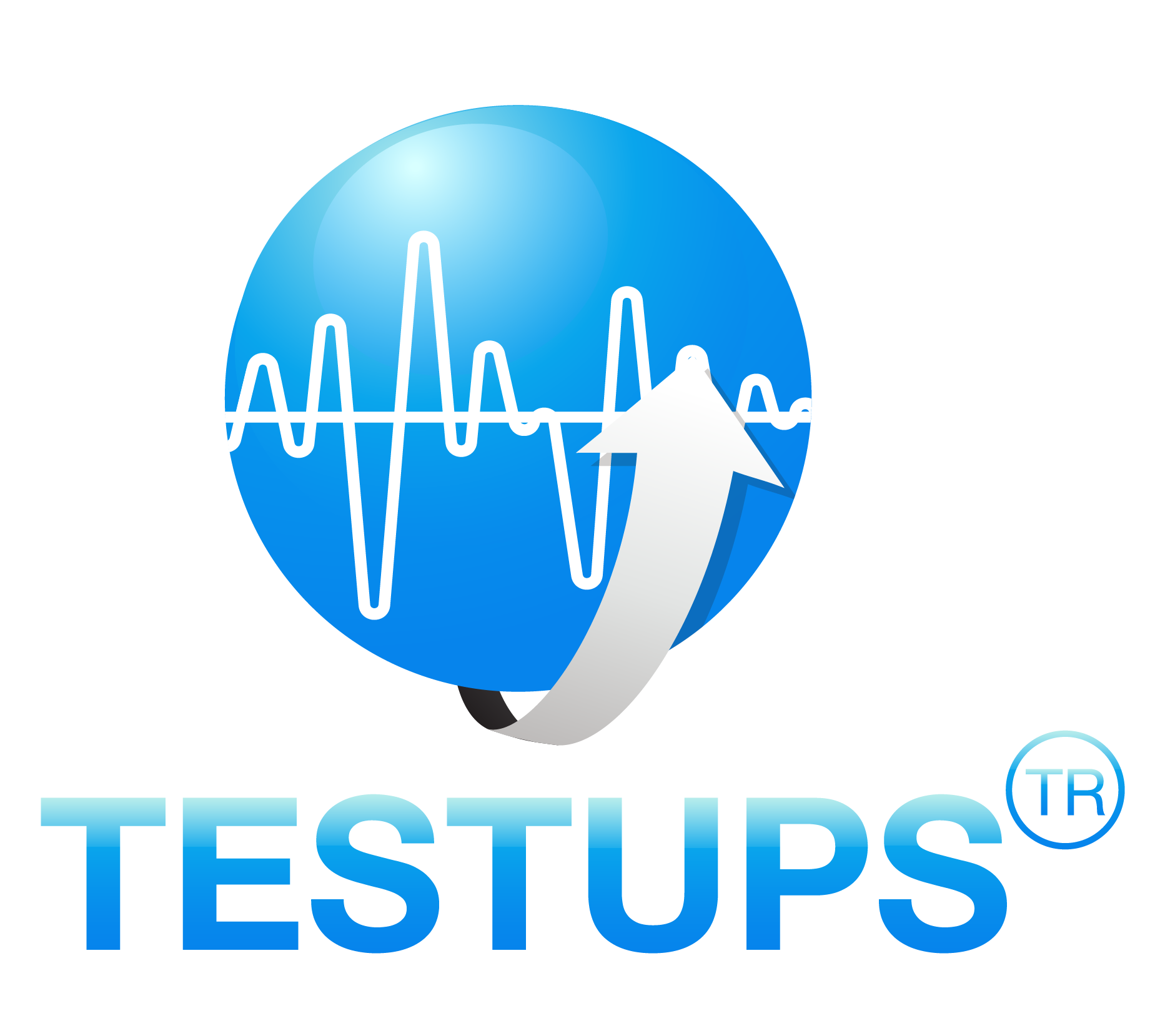
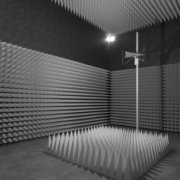
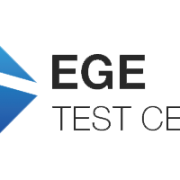 Ege Test Center
Ege Test Center